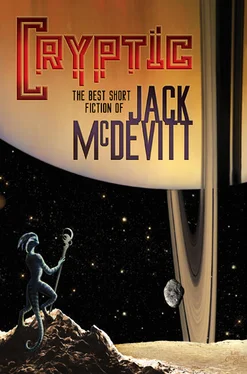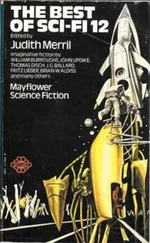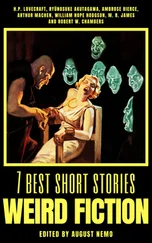Джек Макдевитт - Cryptic - The Best Short Fiction of Jack McDevitt
Здесь есть возможность читать онлайн «Джек Макдевитт - Cryptic - The Best Short Fiction of Jack McDevitt» весь текст электронной книги совершенно бесплатно (целиком полную версию без сокращений). В некоторых случаях можно слушать аудио, скачать через торрент в формате fb2 и присутствует краткое содержание. Издательство: Subterranean Press, Жанр: Фантастика и фэнтези, на английском языке. Описание произведения, (предисловие) а так же отзывы посетителей доступны на портале библиотеки ЛибКат.
- Название:Cryptic: The Best Short Fiction of Jack McDevitt
- Автор:
- Издательство:Subterranean Press
- Жанр:
- Год:неизвестен
- ISBN:нет данных
- Рейтинг книги:3 / 5. Голосов: 1
-
Избранное:Добавить в избранное
- Отзывы:
-
Ваша оценка:
- 60
- 1
- 2
- 3
- 4
- 5
Cryptic: The Best Short Fiction of Jack McDevitt: краткое содержание, описание и аннотация
Предлагаем к чтению аннотацию, описание, краткое содержание или предисловие (зависит от того, что написал сам автор книги «Cryptic: The Best Short Fiction of Jack McDevitt»). Если вы не нашли необходимую информацию о книге — напишите в комментариях, мы постараемся отыскать её.
Cryptic: The Best Short Fiction of Jack McDevitt — читать онлайн бесплатно полную книгу (весь текст) целиком
Ниже представлен текст книги, разбитый по страницам. Система сохранения места последней прочитанной страницы, позволяет с удобством читать онлайн бесплатно книгу «Cryptic: The Best Short Fiction of Jack McDevitt», без необходимости каждый раз заново искать на чём Вы остановились. Поставьте закладку, и сможете в любой момент перейти на страницу, на которой закончили чтение.
Интервал:
Закладка:
Had it been cataloged, indexed in some way, I’m sure I would have. But the envelope was blank, save for an eighteen-year-old date scrawled in the lower right hand corner, and beneath it, the notation “40 gh.”
Out on the desert, lights were moving. That would be Brackett fine-tuning the Array for Orrin Hopkins, who was then beginning the observations that would lead, several years later, to new departures in pulsar theory. I envied Hopkins. He was short, round, bald, a man unsure of himself, whose explanations were invariably interspersed with giggles. He was a ridiculous figure, yet he bore the stamp of genius. And people would remember his ideas long after the residence hall named for me at Carrollton had crumbled.
If I had not recognized my own limits and conceded any hope ofimmortality (at least of this sort), I certainly did so when I accepted the director’s position at Sandage. Administration pays better than being an active physicist, but it is death to ambition.
And a Jesuit doesn’t even get that advantage.
In those days, the Array was still modest: forty parabolic antennas, each thirty-six meters across. They were on tracks, of course, independently movable, forming a truncated cross. They had, for two decades, been the heart of SETI, the Search for Extra-Terrestrial Intelligence. Now, with the Project abandoned, they were being employed for more useful, if mundane, purposes.
Even that relatively unsophisticated system was good. As Hutching Chaney once remarked, the Array could pick up the cough of an automobile ignition on Mars.
I circled the desk and fell into the uncomfortable wooden chair we’d inherited from the outgoing regime. The packet was sealed with tape that had become brittle and loose around the edges. I tore it open.
It was a quarter past ten. I’d worked through my dinner and the evening hours, bored, drinking coffee, debating the wisdom in coming out here from JPL. The increase in responsibility was a good career move; but I knew now that Harry Cooke would never lay his hands on a new particle.
I was committed for two years at Sandage, two years of working out schedules and worrying about insurance, two years of dividing meals between the installation’s sterile cafeteria and Jimmy’s Amoco Restaurant on Route 85. Then, if all went well, I could expect another move up,perhaps to Georgetown.
I’d have traded it all for Hopkins’s future.
I shook out six magnetic disks onto the desk. They were in individual sleeves, of the type that many installations had once used to record electromagnetic radiation. The disks were numbered and dated over a three-day period in 2001, two years earlier than the date on the envelope.
Each was marked “Procyon.”
In back, Hopkins and two associates were hunched over monitors. Brackett, having finished his job, was at his desk with his head buried in a book.
I was pleased to discover that the disks were compatible to the Mark VIs. I inserted one, tied in a vocorder to get a hard copy, and went over to join the Hopkins group while the thing ran. They were talking about plasma. I listened for a time, got lost, noted that everyone around me (save the grinning little round man) also got lost, and strolled back to my computer.
The trace drew its green-and-white pictures smoothly on the Mark VI display, and pages of hard copy clicked out of the vocorder. Something in the needle geometry scattering across the recording paper drew my attention. Like an elusive name, it drifted just beyond reach.
Beneath a plate of the Andromeda Galaxy, a coffee pot simmered. I could hear the distant drone of a plane, probably out of Luke Air Force Base. Behind me, Hopkins and his people were laughing at something.
There were patterns in the recording.
They materialized slowly, identical clusters of impulses. The signals were artificial.
Procyon.
The laughter, the plane, the coffee pot, a radio that had been left on somewhere: everything squeezed down to a possibility.
More likely Phoenix, I thought.
Frank Myers had been SETI Director since Ed Dickinson’s death twelve years before. I reached him next morning in San Francisco.
“No,” he said without hesitation. “Someone’s idea of a joke, Harry.”
“It was in your safe, Frank.”
“That damned safe’s been there forty years. Might be anything in it. Except messages from Mars….”
I thanked him and hung up.
It had been a long night: I’d taken the hard copy to bed and, by 5:00 A.M., had identified more than forty distinct pulse patterns. The signal appeared to be continuous: that is, it had been an ongoing transmission with no indication of beginning or end, but only irregular breaches of the type that would result from atmospherics and, of course, the long periods during which the target would have been below the horizon.
It was clearly a reflected terrestrial transmission: radio waves bounce around considerably. But why seal the error two years later and put it in the safe?
Procyon is a yellow-white class F3 binary, absolute magnitude 2.8, once worshipped in Babylon and Egypt. (What hasn’t been worshipped in Egypt?) Distance from Earth: 11.3 light-years.
In the outer office, Beth Cooper typed, closed filing drawers, spoke with visitors.
The obvious course of action was to use the Array. Listen to Procyon at 40 gigahertz, or all across the spectrum for that matter, and find out if it was, indeed, saying something.
On the intercom, I asked Beth if any open time had developed on the system. “No,” she said crisply. “We have nothing until August of next year.”
That was no surprise. The facility had booked quickly when its resources were made available to the astronomical community on more than the limited basis that had prevailed for twenty years. Anyone wishing to use the radiotelescope had to plan far in advance. How could I get hold of the Array for a couple hours?
I asked her to come into my office.
Beth Cooper had come to Sandage from San Augustin with SETI during the big move twenty years before. She’d been secretary to three directors: Hutching Chaney, who had built Sandage; his longtime friend, Ed Dickinson; and finally, after Dickinson’s death, Frank Myers, a young man on the move, who’d stayed too long with the Project, and who’d reportedly been happy to see it strangled. In any case, Myers had contributed to its demise by his failure to defend it.
I’d felt he was right, of course, though for the wrong reason. It had been painful to see the magnificent telescope at Sandage denied, by and large, to the scientific community while its grotesque hunt for the Little Green Man signal went on. I think there were few of us not happy to see it end.
Beth had expected to lose her job. But she knew her way around the facility, had a talent for massaging egos, and could spell. A devout Lutheran, she had adapted cautiously to working for a priest and, oddly, seemed to have taken offense that I did not routinely walk around with a Roman collar.
I asked one or two questions about the billing methods of the local utilities, and then commented, as casually as I could manage, that it was unfortunate the Project had not succeeded.
Beth looked more like a New York librarian than a secretary at a desert installation. Her hair was silver-gray. She wore steel-rimmed glasses on a long silver chain. She was moderately heavy, but her carriage and her diction were impeccable, imbuing her with the quality that stage people call presence.
Her eyes narrowed to hard black beads at my remark. “Dr. Dickinson said any number of times that none of us would live to see results. Everyone attached to the program, even the janitors, knew that.” She wasn’t a woman given to shrugs, but the sudden flick in those dark eyes matched the effect. “I’m glad Dr. Dickinson didn’t live to see it terminated.” That was followed by an uncomfortable silence. “I don’t blame you, Doctor,” she said at length, referring to my public position that the facility was being underutilized.
Читать дальшеИнтервал:
Закладка:
Похожие книги на «Cryptic: The Best Short Fiction of Jack McDevitt»
Представляем Вашему вниманию похожие книги на «Cryptic: The Best Short Fiction of Jack McDevitt» списком для выбора. Мы отобрали схожую по названию и смыслу литературу в надежде предоставить читателям больше вариантов отыскать новые, интересные, ещё непрочитанные произведения.
Обсуждение, отзывы о книге «Cryptic: The Best Short Fiction of Jack McDevitt» и просто собственные мнения читателей. Оставьте ваши комментарии, напишите, что Вы думаете о произведении, его смысле или главных героях. Укажите что конкретно понравилось, а что нет, и почему Вы так считаете.












